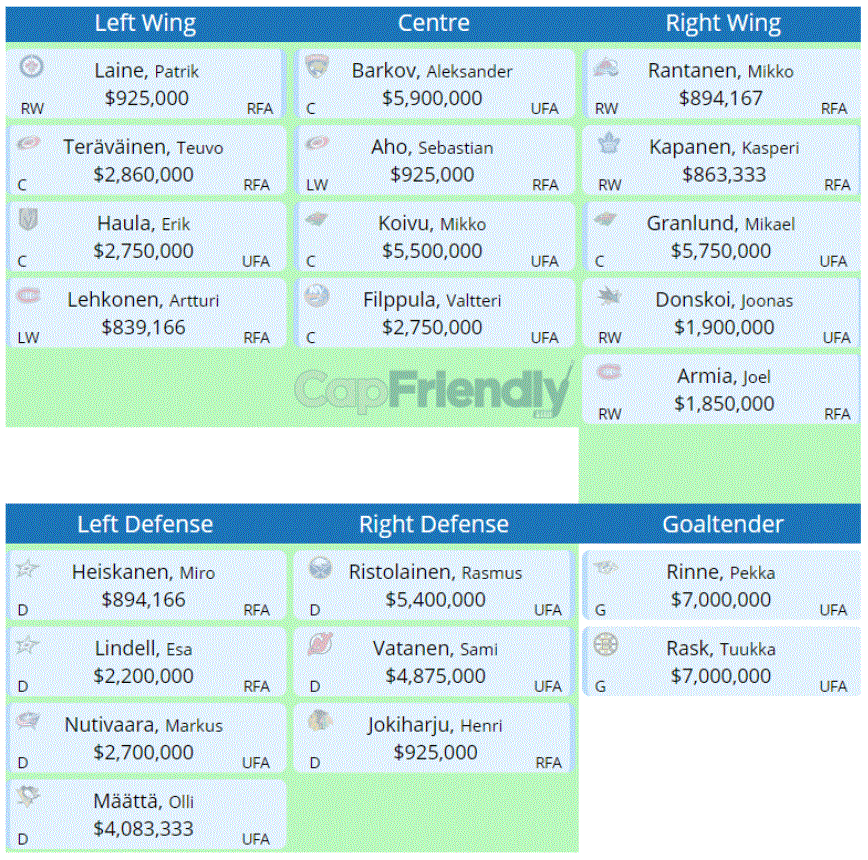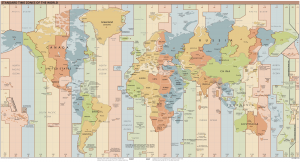*If you already read Parts I, II, III, IV and V of this article, skip down to where it says “UTC +2.”
Sports are generally fun. Reality is generally not as fun. Sports in the context of reality are fluctuating levels of fun and not as fun. Since I do not consider myself a masochist, I try to write fun stuff. And you know what’s fun? Making teams that are unlikely to exist, that are selected based on handpicked, whimsical parameters, and pitting them against each other.
After the wonderful writers at The Athletic went to the painstaking measures of projecting teams for Canada, the United States, Sweden, Russia, and Finland at the 2020 World Cup of Hockey, it was announced days later that the World Cup of Hockey is, at present, not happening. The 2014 Olympics feel like a decade ago, and meaningful international hockey does not look to be on the cards anytime soon. One cool concept introduced at the more relaxed 2016 World Cup was Team North America. Made up of the best 23-and-under players from the US and Canada, stars like Connor McDavid and Johnny Gaudreau joined forces to offer fans a glimpse into the NHL’s bright future. And with pieces being written recently by Sean McIndoe that aimed to field the best and worst teams possible using existing contracts, I started thinking. Thus, the Great Ice Hockey Time Zones World Cup was created.
National borders are so arbitrary, and yet we stage the biggest sporting events in the world (among other things) based on them. International hockey tournaments with NHL talent have always been played on tilted ice, with Canada winning three of the five Olympics in which players from the senior circuit have partaken. The US has closed the gap on Canada recently, but with Russia still developing talent using Soviet-era training methods and Finland, Sweden and others not quite having the depth to match the North American nations due to their smaller populations, it doesn’t seem that parity is nearby. It would be more intriguing to play a tournament with the people that celebrate New Years’ simultaneously with you. That’s right—forget national allegiances. On hockey’s biggest stage (soon—trust me), the sport’s foremost superstars will be suiting up for teams like “Coordinated Universal Time (acronym UTC—no idea how) negative six.” If you weren’t always friendly with middle school geography, here’s a map of the time zones.
The appeal is simple—we’re trying to break up the Canadian juggernaut by taking advantage of how much sheer landmass the True North spans, but we’re giving them the American studs directly south to add star power. Fortunately for us, the time zones in Canada are actually pretty nicely split down the borders of the provinces, so that sense of hometown pride will burn extra strong. I thought that we would run into an issue with the Scandinavians. Fear not, though—Sweden and Finland are actually in different time zones as well! The Finns do get the short end of the stick in that Sweden is aided by nations such as the Czech Republic in UTC +1, while Russia has no players of note until UTC +3, leaving our small but mighty nation of some five million stuck in the middle in UTC +2.
A conditional: it may have gleefully occurred to you, “Oh boy, Russia is SCREWED!” The world’s largest nation by landmass has already been struggling to churn out top young talent relative to previous levels for a few years now, and it spans eleven f*cking time zones! To level the playing field, I split Russia in two—Russia West will be the players hailing from UTCs +3 and +4 near Europe, while Russia East will be comprised of the legends in UTC +5 and east—from basically Siberia to holy-shit-that’s-actually-still-Siberia.
Finally, tragically, it is with much grief that I share with you that neither Sidney Crosby nor Nathan MacKinnon—probably two of the best five players in the world—will be part of this exercise. Both grew up in the province of Nova Scotia in Canada (population 950,000, UTC -3). There have only been a few dozen NHL players from Nova Scotia in history, and there are less than ten active players. Plus, if I added UTC -3 players to the UTC -4 team, well, this really wouldn’t be a contest at all. Other than that, however, one of the attractive features of the GIHTZWC is that every top player in the world besides Crosby and MacKinnon are on a squad. Players that generally wouldn’t get a chance to really compete for a medal, like Frederik Andersen of Denmark and Leon Draisaitl of Germany, will be surrounded with the types of teammates that will have them playing every match-up tight.
Global time zone supremacy is on the line. As a resident of UTC -4 (Eastern Standard Time) my whole life, I’m finally ready to lord over the hockey universe, with a little help from McDavid and John Tavares. Let’s break down the teams—lineups, strengths, weaknesses, and more—and find out where the best distance to live from the Prime Meridian is once and for all!
UTC +2 (Finland)

UTC +2 is unlucky in that it doesn’t encompass any hockey hotbeds besides Finland and a sliver of western Russia. Essentially, this is just a Team Finland.
It doesn’t take a rocket scientist to deduce UTC +2’s strengths and weaknesses, either. If this squad is going to make any noise, they’ll have to ride Rinne or Rask as far as they’ll take them and hope that their top six score at unconscious rates, which is possible. Laine-Barkov-Rantanen is a first line that can just about match up with any three in the world, and Sebastien Aho should make hay on the second line with teammate Teuvo Teravainen. The line of Haula, Granlund, and Koivu, who all played together in Minnesota in the not-so-distant past, is respectable but not quite up to snuff given the caliber of this tournament.
Miro Heiskanen is a rising star in Dallas, but might be a little over his head here given that he’s going to have to match up with opposing teams’ top talent ad nauseam. The occasionally brilliant but maddeningly inconsistent Rasmus Ristolainen of my Buffalo Sabres probably isn’t cut out to be a first-pairing player in this exercise, either. The rest of the D are all NHLers, but you can’t say much else about them, though 19-year old Henri Jokiharju will likely be a blueline mainstay for the Finns with Heiskanen for decades to come. Behind them, one could go a number of different directions in net, but we’ll stick with the veterans Rinne and Rask, who have played in a number of big games, over the likes of Antti Raanta and Juuse Saros.
UTC +2 got put in a tough situation, and despite the otherworldliness of their first line, likely won’t medal. Their goalie, whomever that may be, will have to stand on his head if the Finns are to get on the podium, and some unproven defensemen will have to grow up fast. We know better than to disregard the dogged togetherness Finland plays with on international ice, but they are likely to get overwhelmed given the talent on display in other squads.
But what about all the other great time zone-based teams? I will be breaking down the whole world of hockey over the next few days, so make sure to visit the Georgetown Voice for updates. Next on the list are UTC +3 and UTC +4, both of which contain parts of West Russia. Who will be placed on these teams? How good will they be? Check back in tomorrow to find out.



